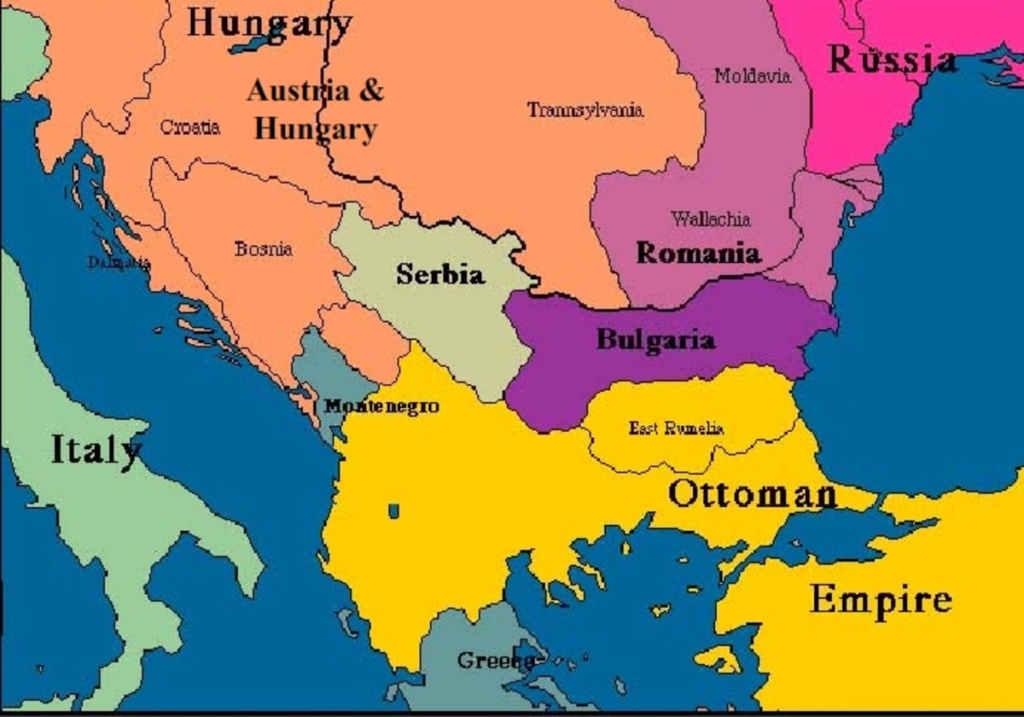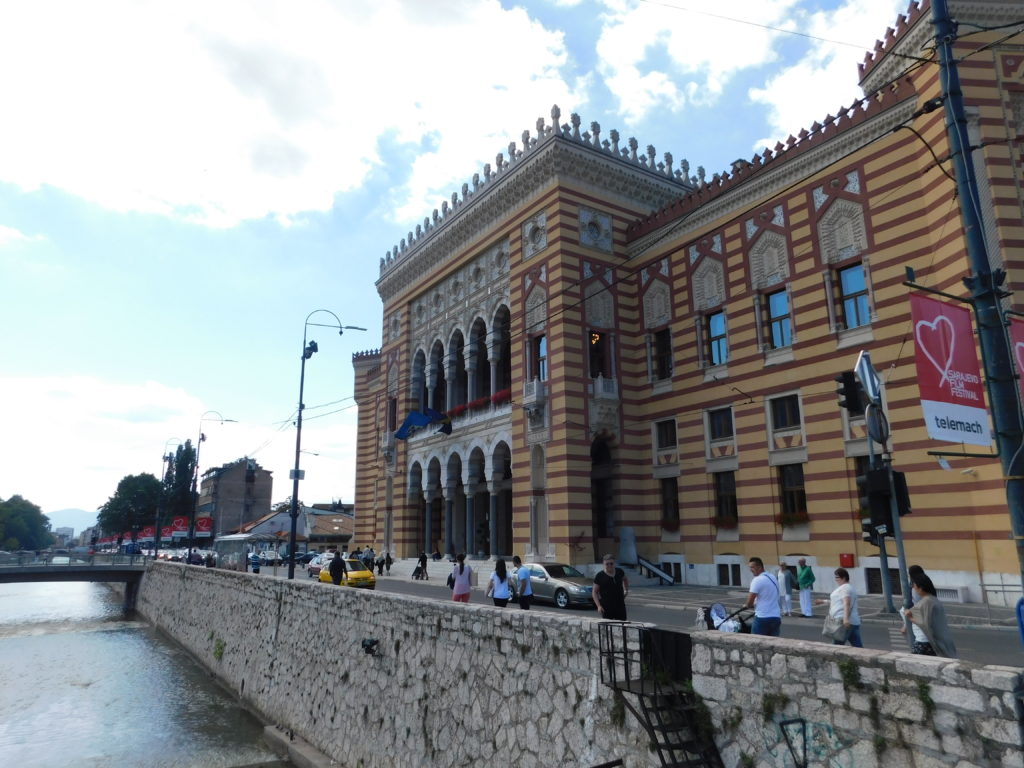The history of Sarajevo and my memories and emotions about the city proved too vast and full to condense into a single short post so I’ll ask your indulgence. Spend a few more minutes with me before we revisit the 1984 Winter Games.
The assassination was the excuse.
The previous post ended in the sixteenth century. I’ll begin this one by skipping ahead to 28 June 1914. One block east and one block south of my hotel stood
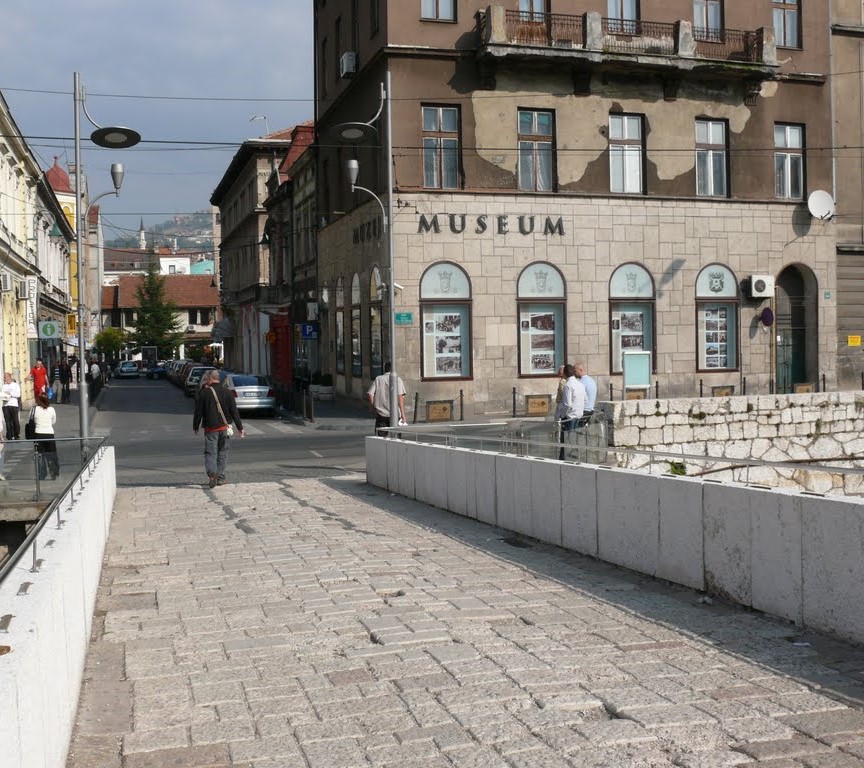
the Latin Bridge. Near this spot on 28 June 1914, Gavrilo Princip stationed himself in Schiller’s Cafe – now the museum in the right side of the photo – and succeeded in killing Archduke Franz Ferdinand of Austria.
Seven co-conspirators were prepared to assassinate the Archduke that day. Their attempts, including a poorly aimed hand grenade thrown by Nedeljko Čabrinović, injured mainly bystanders lining the route. When the Archduke’s car stalled near the bridge, Princip saw his chance. He stepped through the crowd and fired twice. The first bullet hit Franz Ferdinand in the jugular. The second, intended for the provincial governor, missed and hit the Archduke’s wife Sophie in the abdomen. Both Austrians would die of their wounds.
If you’re interested in the history of World War I and why the assassination of the Archduke and his wife provided a convenient excuse to plunge Europe and eventually the U S into this conflict, start your research with the 1878 Treaty of Berlin. It’s ostensible purpose was, in part, to end the wars that had raged across the peninsula for most of the decade and determine the territories of the states in the peninsula following the end of the Russo-Turkish War.
[Map from owlcation].
The treaty satisfied none of the Great Powers of Europe – Russia, Great Britain, Austro-Hungary, and Germany – each of whom had designs on and different motivations with regard to the Balkans. Russia, for example, was interested in the region as an ideological pan-Slavic unifier and as a way to secure easier access to the Mediterranean. This Russian ambition didn’t sit particularly well with Great Britain whose interest was mainly preventing Russia from doing exactly that. Meanwhile, Germany, the strongest continental power at the time, had formed an alliance with Italy that stymied Austro-Hungary’s ability to expand its domain to the southwest. The tension created by this treaty roiled Europe for more than three decades.
As an aside, I learned during a walking tour of Sarajevo the reason its city hall has a pseudo-Moorish design. In the late nineteenth century the city’s population consisted mainly of Muslims and Sephardi Jews {Mediterranean and Levantine Jews as opposed to the Northern European Ashkenazi} who were particularly unhappy with Austrian arrogance attempting to impose their more western social mores and architecture on the city.
Thinking they might quell a sort of administrative rebellion fueled by the local population’s refusal to pay taxes, use Austrian schools, and such, the Austrians began building their public buildings in this style because they believed it would be more aesthetically acceptable to the local population.
Stories of the siege, a home cooked meal, and Florence Foster Jenkins.
Stories of the siege:.
Let’s start with this: The 1991-1995 Balkan Wars were not civil wars. They were wars between internationally recognized republics that had constitutionally declared their independence from Yugoslavia. Thus, they were international wars.
Given its centuries long history of diversity and tolerance, for many of the citizens of Bosnia & Herzegovina, and particularly for the residents of Sarajevo, the notion that there could be a circumstance where the three principal ethno-religions groups (the Catholic Croats, the Orthodox Serbs, and the Muslim Bosnians) might turn against one another was all but incomprehensible. Their history belied the possibility. Their interpersonal relationships belied the possibility. Their daily experience belied the possibility. Intolerance was alien to the everyday experiences of most of them and the violent breakdown of comity was apparently inconceivable to many.
(Sarajevo consists of four municipalities {Centar, Novi Grad, Novo Sarajevo, and Stari Grad}. In a 1991 census, three of the four municipalities had majority Muslim populations with only the Old City or Stari Grad being substantially Muslim at a bit less than 78 percent. Overall, a bit more than half identified as Bosniaks, one quarter as Serbs, 13 percent as Yugoslavs, 7 percent as Croats and 4 percent as other.)
The Serbian siege began on 25 April 1992 and the first two casualties were two young women – Suada Dilberović, a Bosniak, and Olga Sučić, a Croat. They were killed by snipers while crossing a bridge spanning the Miljacka River. At the time the bridge was called Vrbanja. It’s been renamed the Suada and Olga Bridge in their memory.
By the end of April, Bosnian forces occupying the high ground had surrounded the city.
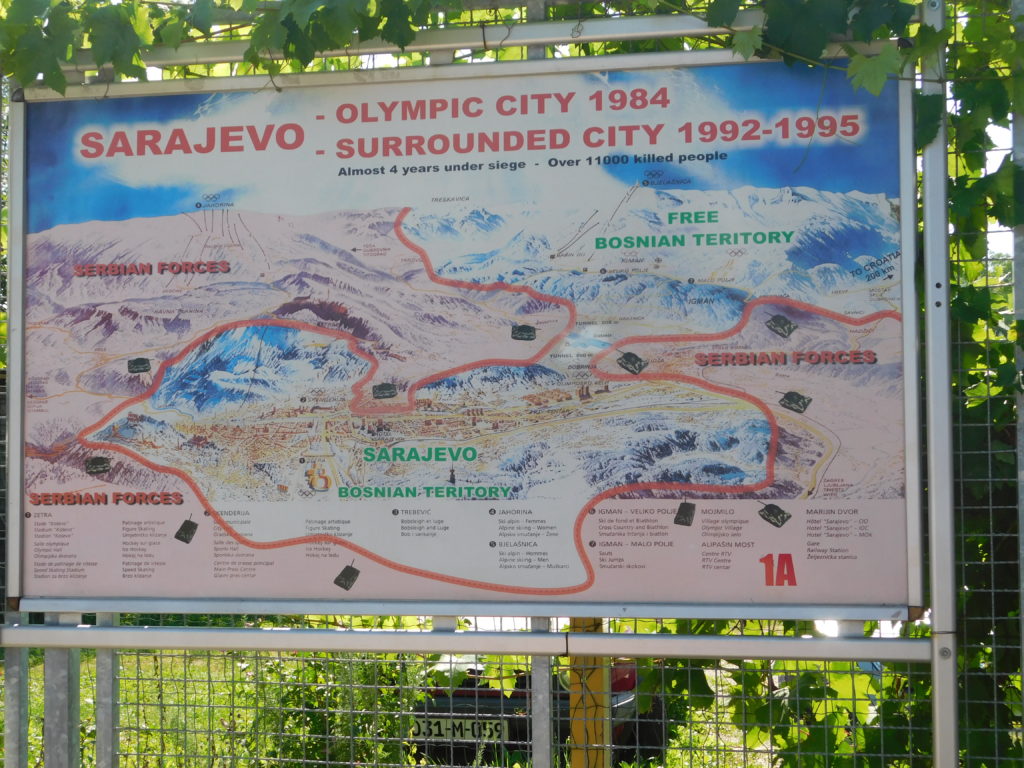
On 2 May 1992, they established a total blockade of the city blocking the major access roads, cutting off supplies of food and medicine, and cutting off the city’s utilities – water, electricity and gas. Among the only sources of fresh water was the Sarajevo Brewery which operated at a symbolic three percent of capacity.
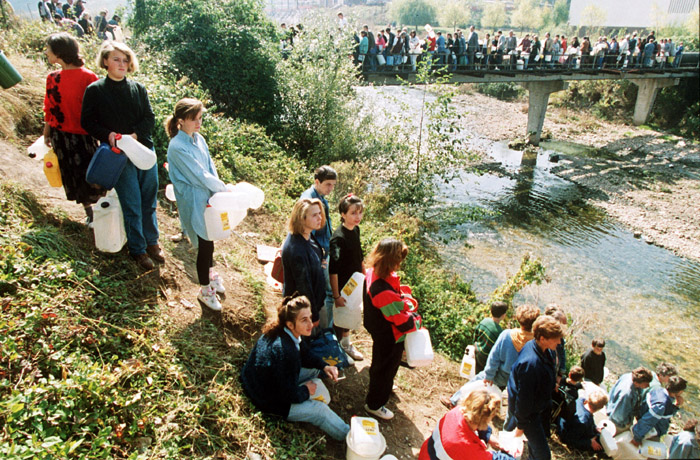
This photo by Mikhail Evstafiev shows people standing in line for water where they were frequent targets of Serbian snipers.
After a morning visit to the Tunnel of Life, which provided much needed supplies as one of the only ways in or out of the city, we met with a fellow named Almir who was an adult during the siege unlike our guides who were teenagers. I wrote above about the sense of amity I felt throughout the city during my visit and Almir (standing in the photo)

told us at some length how neighbors continued helping and supporting one another while disregarding the other’s religion throughout the siege. His was a tale we heard repeatedly.
A home cooked meal:.
Our tour provider had arranged for two families to host dinners for our group of 12 – split into two groups of six. We arrived a bit early at a midrise apartment that still had visible damage from the war. The six of us squeezed around a small table with Sanela, her husband, their son, and her mother-in-law. (I recall Sanela’s name because she was the only one who spoke any English.)
After learning about her job as a sous-chef, her husband’s job in a warehouse and, the ways they focus their energies on trying to make a better life for their children (their daughter was at a rhythmic gymnastics practice), the talk turned to Sanela’s experience during the war. She talked about living in basements, moving through trenches and constant bombardments, and about helping to care for her younger sister. Her description of trying to maintain a sense of normalcy by continuing her education was harrowing. We learned that at war’s end, she studied without a break, choosing school over social life so she could finish her education at the same age she would have had the war not interrupted the process. (Sanela is in the blue shirt hugging her son.)

Florence Foster Jenkins:.
I want to finish with one more memorable experience in Sarajevo and a bit of artistic perspective.
Our time in Sarajevo coincided with the 20th Sarajevo Film Festival and our guide Damir had offered as his treat to purchase tickets to a screening of the movie Florence Foster Jenkins with Meryl Streep and Hugh Grant. The director, Stephen Frears, would receive the Heart of Sarajevo Award but even better, the film was being shown in the “open-air theater.”

(Damir is facing the camera and wearing a blue windbreaker.) It was one more moment of vibrant life.
Finally, here’s another photo by Mikhail Evstafiev.
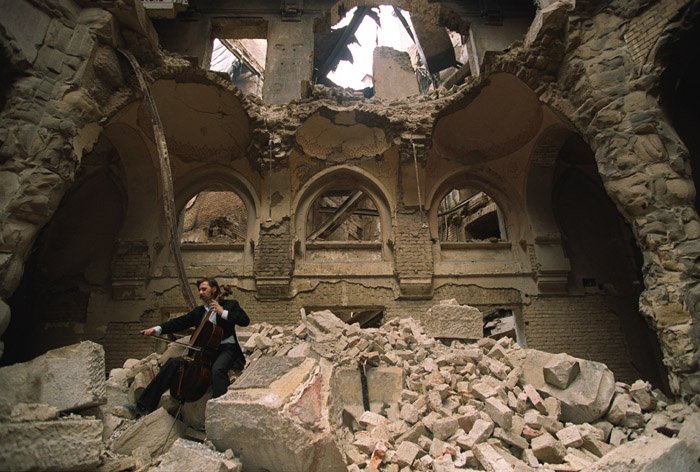
This one might have inspired Steven Galloway’s novel The Cellist of Sarajevo. Consider the brilliant opening paragraphs of that book:
It screamed downward, splitting air and sky without effort. A target expanded in size, brought into focus by time and velocity. There was a moment before impact that was the last instant of things as they were. Then the visible world exploded.
In 1945 an Italian musicologist found four bars of a sonata’s bass line in the remnants of the firebombed Dresden Music Library. He believed these notes were the work of the seventeenth-century Venetian composer Tomaso Albinoni, and spent the next twelve years reconstructing a larger piece from the charred fragment. The resulting composition, known as Albinoni’s Adagio, bears little resemblance to most of Albinoni’s work and is considered fraudulent by most music scholars. But even those who doubt its authenticity have difficulty denying the Adagio’s beauty.
Nearly half a century later, it’s this contradiction that appeals to the cellist. That something could be almost erased from existence in the landscape of a ruined city, and then rebuilt until it is new and worthwhile, gives him hope. A hope that, now, is one of a limited number of things remaining for the besieged citizens of Sarajevo and that, for many, dwindles each day.
I’ll close here with the same thought as my original post, “Twenty years after the end of the siege, in a rebuilt city, both hope and Sarajevo survive.”
